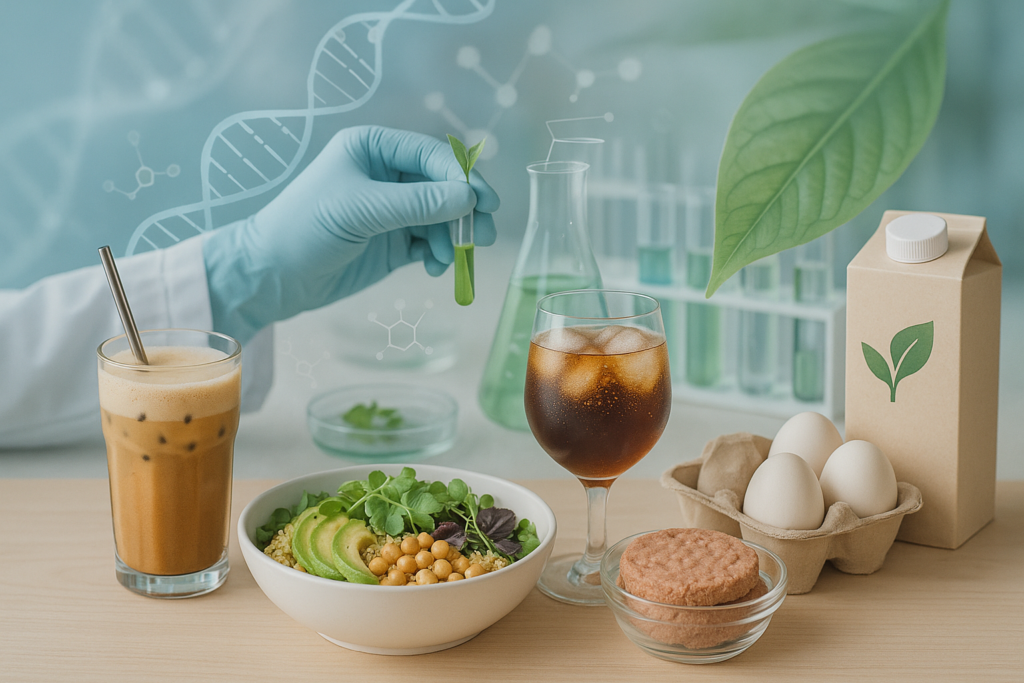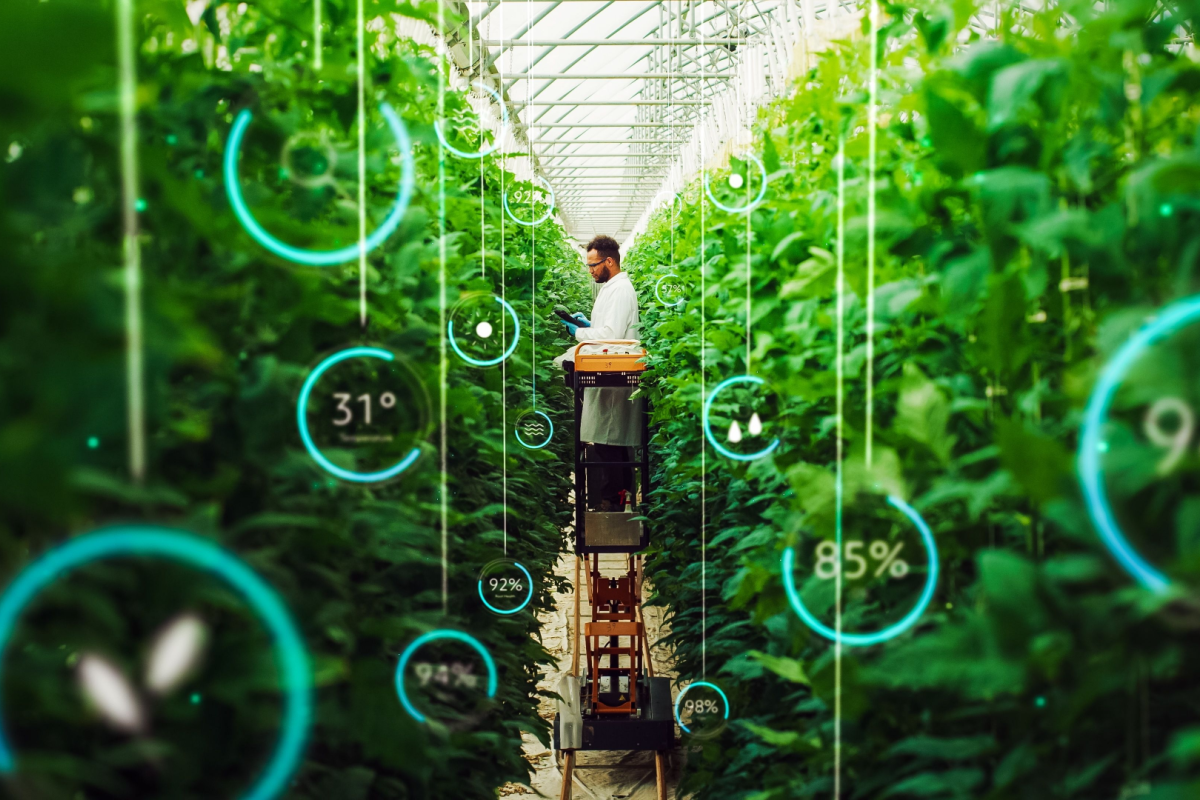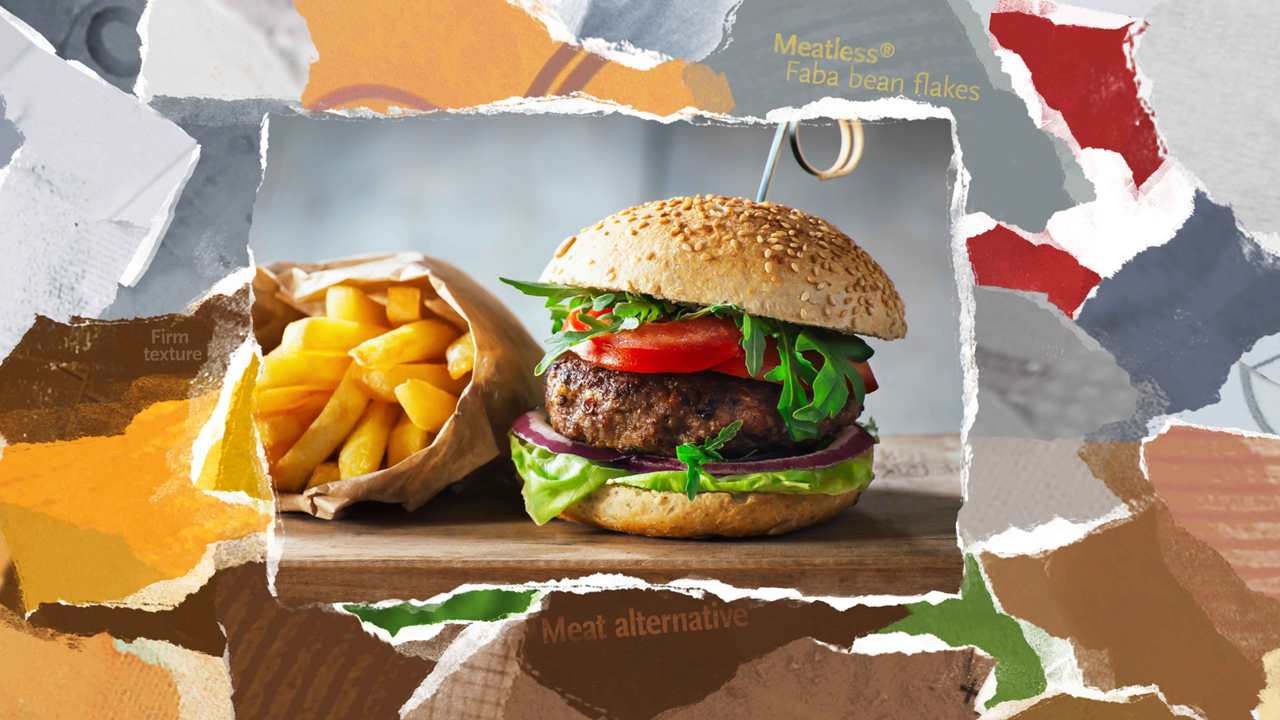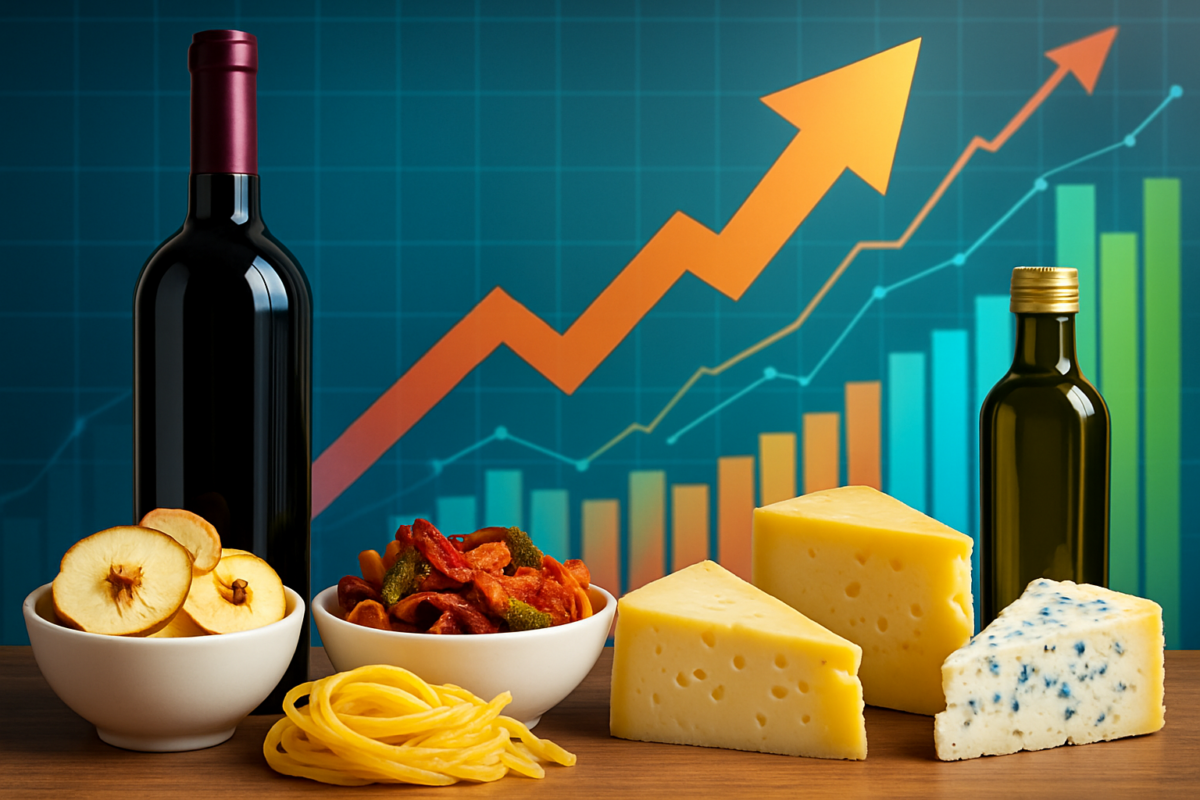What do plant-based protein, cannabis-infused tonics and robot-packed meals have in common? According to food forecasters and market analysts, they’re all part of a food system that, in 2025, is evolving to meet demands for customization, functionality and flexibility.
This year’s leading trend reports — from The New York Times, Ricardo Cuisine, Food Network, the Michelin Guide and global market intelligence — point to a landscape less rooted in tradition and more shaped by cultural shifts and consumer intent.
According to Statista, the global food market is projected to generate $9.43 trillion in revenue in 2025, with a compound annual growth rate (CAGR) of 6.41% through 2030. This is driven by innovation in product development, e-commerce and changing consumer lifestyles.
Below, we explore four key themes emerging from these forecasts. We also show how real companies are already putting these ideas into practice.
Culinary Exploration and Global Flavors
Consumers are increasingly expanding their palates through sauces, spices and globally inspired comfort foods. Condiments like toum, salsa macha and tzatziki serve as low‑commitment flavor bridges to global cuisine.
Brands are also formulating coffee beverages with added probiotics, adaptogens (plant-derived compounds) and even botanicals to support energy, digestion or stress relief.
Borealis Foods, based in Oakville, Ontario, Canada, is reimagining one of the most universal comfort foods — instant noodles. Its Chef Woo line offers 20 grams of organic, plant-based protein per serving, free of traditional additives and fillers. This example demonstrates how companies rework familiar formats for nutritionally minded, globally curious consumers.
Health, Wellness and Functional Eating
Functional eating continues to gain ground in 2025, whether through high-protein formulations, diet-personalized snacks or mood-enhancing drinks. Socially driven “tribal diets” — from lactose-free supplements to menopause-focused meals — are creating new product categories. Plant-based proteins remain central to this evolution, both for their nutritional value and alignment with sustainability goals.
Ingredient innovators like Cosaic Neo are among many enabling this transformation. Their cream-like plant-based ingredient improves protein solubility and taste in ready-to-drink products like shakes and alt‑dairy. It also addresses technical challenges in the clean‑label beverage category.
Meanwhile, PAN Sweden is researching plant-based protein processing methods to improve texture and nutritional performance, helping accelerate the protein transition in Northern Europe.
Experience-Driven Dining and Emotional Connection
In contrast to the automation reshaping retail, consumers increasingly seek dining experiences that feel personal and emotionally grounded. Forecasts highlight the value of warm service, community-building restaurants and experiential dining — whether it’s open-fire cooking or immersive takeout packaging.
Non-alcoholic and functional drinks are gaining market traction, with the global non-alcoholic spirits sector expected to make $1.2 billion by 2034 at a CAGR of 7.4%.
Functional beverages are also becoming an emotional alternative to traditional social drinking.
Brands like Hiyo are addressing this shift with non-alcoholic seltzers infused with adaptogens and nootropics — plant compounds and cognitive enhancers believed to support stress relief and focus. Their growth and partnership with Constellation Brands reflect a broader market move toward wellness-centric beverages that still offer a “buzz” — but without the alcohol.
Convenience, Customization and Retail Innovation
Convenience is no longer about shortcuts — it’s about meeting consumers where they are, with flexibility and functionality.
AI-powered grocery tools, hyper-personalized snack boxes and elevated convenience‑store meals transform access to food. Snacking is replacing formal meals, and shelf-stable innovations are gaining traction.
Analysts project the dehydrated vegetables market will swell to $192.1 billion by 2035, while the dried fruit ingredients market is expected to reach $11.9 billion by 2031.
The fast-food industry, on the other hand, is expected to rise from $663.9 billion in 2025 to $833.4 billion by 2029. This reflects the increasing consumer demand for mobile ordering, quick-service innovation and frictionless delivery platforms.
These formats serve multiple demands: portability, long shelf life and simplicity of ingredients. This makes them ideal for both snack manufacturers and meal kit developers responding to flexible eating habits.
As these themes continue to unfold, companies that act on both data and cultural insight are well-positioned to lead. These trends also reveal the vulnerabilities of global supply chains. The recent spotlight on Japan’s matcha industry reveals its struggle to meet rising international demand. This case underscores the importance of balancing product innovation with agricultural sustainability.
If you want your company to be featured on Xtalks.com, please email [email protected].











Join or login to leave a comment
JOIN LOGIN